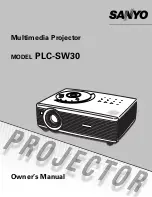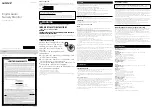
Chapter 1 - 7SR45 Description of Operation
©2018 Siemens Protection Devices Limited Chapter 1 Page 45 of 48
3.
Card Error
In case of I/O card failure, the error message is displayed and IRF condition will be signalled.
The relay performance is not guaranteed and it should be sent to the factory.
4.
MLFB Error
If the device information data is not correct during the start up, the error message will be displayed and IRF
condition will be signalled.
In case of MLFB error the relay will not be functional and the relay should be sent to the factory.
5.
Calibration Error
The 7SR45 Argus Relay checks for the integrity of the calibration data during the start up and displays a
message in case of an error and IRF condition will be signalled.
The user can acknowledge the error message via HMI only and the default calibration data will be applied to
the relay and IRF condition will be cleared.
The relay will be functional only when the calibration error message is acknowledged. In this case, the relay
performance is not guaranteed and it should be sent to the factory for calibration.
6.
Setting Error
The 7SR45 Argus Relay checks for the integrity of the settings during the start up and displays a message in
case of an error and IRF condition will be signalled.
The user can acknowledge the error message via HMI only and the default settings will be applied to the
relay and IRF condition will be cleared.
The relay will be functional only when the setting error message is acknowledged.
NOTE:
In case
Card Error
and
MLFB Error
, the relay will not be functional and the relay should be sent to the factory.
The following table displays the error messages and the error codes in the
Instrument Mode
.
Table 3-16
IRF
Errors
Error Code
Error Message
Setting Error
00000001
Load default settings!
Calibration Error
00000010
Load default calibration!
MLFB Error
00000100
MLFB Information Error!
Card Error
00001000
Analog & IO card Error!
Internal Supply Voltage Error
00010000
Unexpected Error
00100000
NOTE:
If a binary output is assigned to IRF, it is recommended not to use the same binary output for any other protection
function configuration.
3.19 Data Storage
The relay stores two types of data:
Fault Records
,
Event records
.
Data records are stored in the non-volatile memory. The data storage menu contains the settings for clearing
events and faults.
3.19.1 Fault Records (Trip Log)
Fault records are triggered when the protection function detects a fault condition and the trip alert message
appears on LCD to indicate that a new fault has occurred. Up to 10 fault records can be stored and displayed on
the fascia LCD.
Fault records provide a summary of relay status when the trip occurs, i.e. setting group, element issued the trip,
any phase/earth picked up, fault magnitude, LED indications, general alarm, and date and time.
Trip alert message is displayed until the fault is acknowledged by the user.
The event records and the fault records provide the full sequence of events that resulted to a trip for analysis.
Fault records are stored in a rolling buffer with the oldest faults overwritten. The fault storage can be cleared with
the DATA STORAGE >
Clear Faults
setting in HMI.
















































